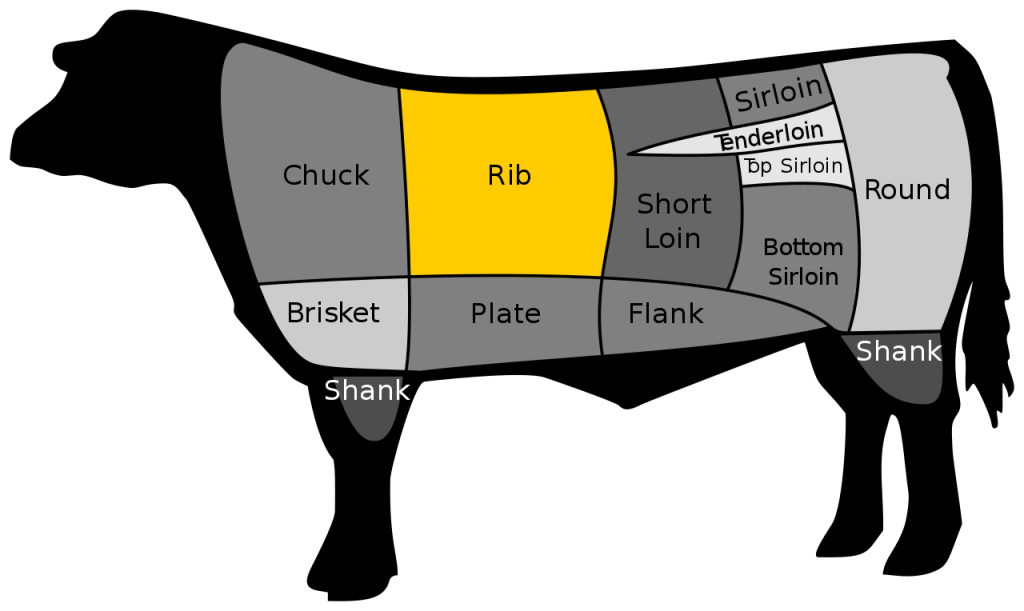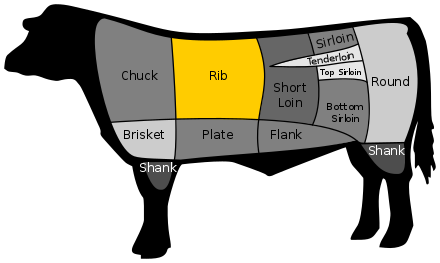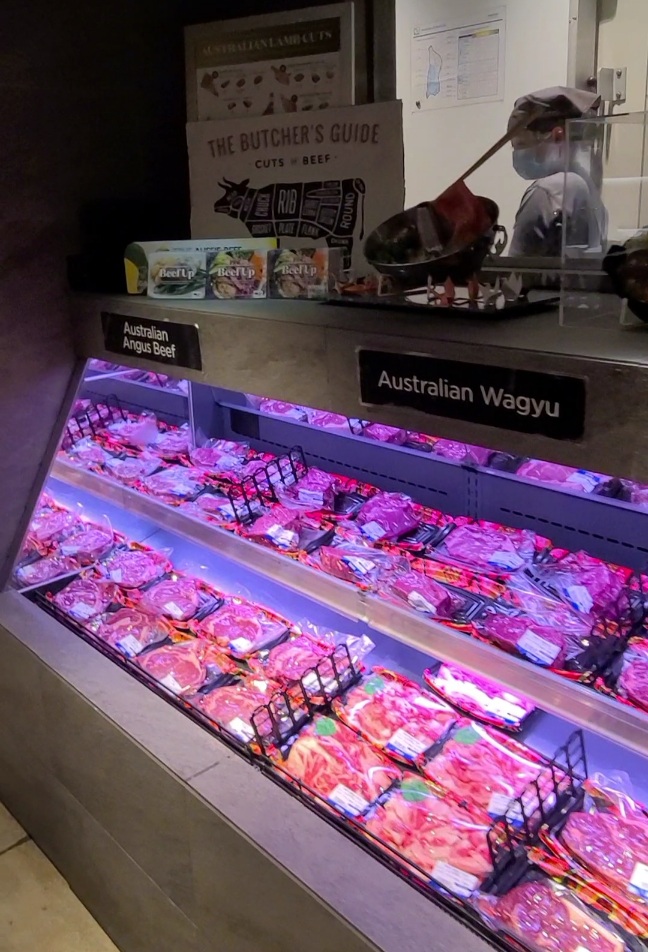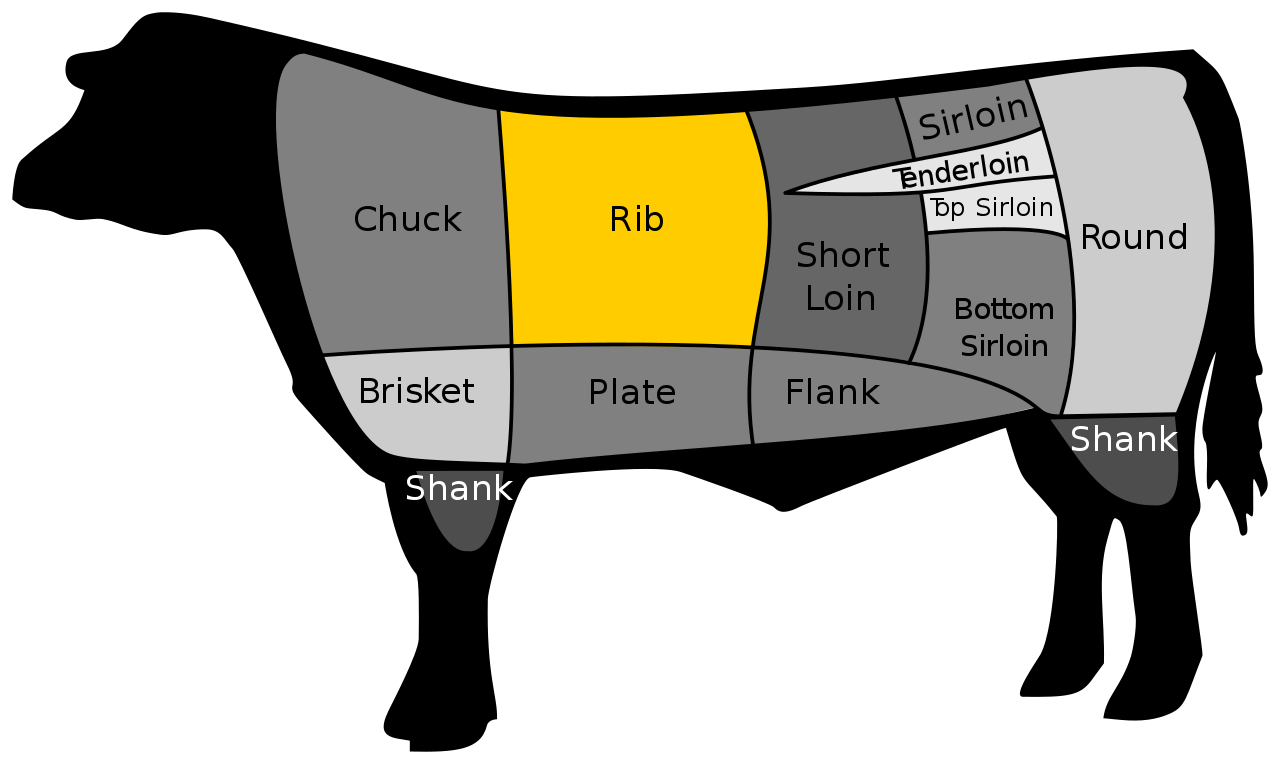Few foods invoke such primal satisfaction as a well-prepared steak. For good beef, a simple seer or kiss from an open flame can elevate a simple piece of meat from “food” to a primal experience – if it’s the right piece of meat. In this complete guide, we’ll cover the types and grades of steak best to worst, to set you up with the cut of beef you need for the perfect meal.

When choosing a cut of meat that has good potential of making a good meal and is worth your time of prepping and primpinh the meat, there are two traits you want to consider:
• The grade of the steak
• The cut of the steak.
In this article we’ll dig in depth firstly explaining the USDA rated grades of steak from best to worst. Then, we’ll explain the cuts of beef from the cow, the types of steak they produce, and explain which steaks are likely best for your needs.

CONTENTS OF THIS ULTIMATE GUIDE TO STEAK

The USDA Beef Grades: A structured approach to assessing steak quality
USDA steak grading is a voluntary process steak producers can undergo which grades beef on qualities such tenderness, juiciness, and flavor. USDA grading is an excellent tool for judging a steak because no matter what cut of the cow you’re lucky enough to get your tongs on, it’s worthless if the meat is bad from the start.
USDA Grades of Steak best to worst: Prime, Choice, Select, and Lower Grades
4. Standard (Lower Grade of Beef)
5. Commercial (Lower Grade of Beef)
6. Utility (Lower Grade of Beef)
7. Cutter (Lower Grade of Beef)
8. Canner (Lower Grade of Beef)
According to the USDA, there are technically 3 grades of steak quality beef and several lower grades of beef. The steak quality grades of Prime, Choice, and Select.
The USDA Grades of Beef for Steak
1. Prime
This is the highest grade of steak, and it is reserved for only the best cuts of beef. Prime beef comes from young, well-fed cows and has a high level of marbling (fat running through the meat). It is tender, juicy, and flavorful, making it the most expensive grade of steak.
2. Choice
Choice grade steak is the next highest grade, and it is still considered to be very good quality. It has a moderate amount of marbling and is generally tender and flavorful.
3. Select
This is the lowest grade of steak that is considered to be of good quality. Select grade steak has the least amount of marbling and may be less tender and flavorful than the higher grades.
4. Standard
Standard-grade steak is the lowest grade of steak that is commonly available in stores and restaurants. It is typically the least tender and flavorful, and it may have a more fibrous texture.
In general, the best grades of steak are those that have the most marbling, as the fat adds flavor and helps to keep the meat tender and juicy during cooking. However, the grade of steak can worked around based on the cut of beef and the way it is prepared. For example, a prime rib roast cut from the rib section of a cow may be considered a higher grade of steak than a sirloin cut from the same cow.
Other Grades of Beef Below “Steak Grade”: Ground Beef, Canned Beef, and Processed Beef
There are also other grades of steak, such as Utility, Cutter, and Canner, which are generally not considered to be suitable for use as steaks. These grades are usually used for ground beef or other processed meat products.
Utility, Cutter, and Canner grade beef are grades of meat that are not typically used for steaks. These grades are generally considered to be lower quality than Prime, Choice, and Select grade beef, and they are usually used for ground beef or other processed meat products.
Utility grade beef is the lowest grade of beef that is typically sold to consumers. It is generally less tender and flavorful than the higher grades and is used in a variety of processed meat products, such as sausage, jerky, and canned meat.
Cutter grade beef is slightly higher in quality than Utility grade beef. It is still considered to be a lower quality grade, but it is used in a wider variety of products, including ground beef and steaks.
Canner grade beef is the lowest grade of beef that is used for canning. It is generally the least tender and flavorful of all the grades and is used in canned meat products, such as corned beef and beef stew. It is not typically used for steaks or other fresh cuts of beef.
It’s worth noting that these grades are not used in all countries and regions, and the criteria for assigning these grades may vary depending on the location. In general, however, these grades are reserved for lower quality cuts of beef that are used in processed meat products rather than being sold as steaks or other fresh cuts of beef.
Now that you understand the grades of beef, which essentially indicates the quality of the overall beef coming from a single cow – rating tenderness, marbling, and flavor quality – it’s time to understand the best cuts of steak.
How Knowing Different Cuts of Steak Helps Use Choose a Better Steak
Cuts of steak are particular pieces of beef, intended to be eaten as a steak, that come from particular parts of the cow. Each cut of the cow and respective steak, such as the flank steak, filet mignon, skirt steak, ribeye, etc., have reliable levels of fat marbling and fat content, tenderness, and flavor, that allow us to pick a cut of steak to suit our own taste preferences.
Additionally, understanding the different cuts of beef, and how the fat, fibers, and flavor change under fire. helps us choose the best steak for our kitchen and cooking method. Whereas extremely tender steaks, such as a tenderloin or filet mignon, only require a quick searing and a flavorful sauce or prep, more fat marbling translates to higher heat flash cooking, and tougher cuts with intense beef flavor like strip steaks, flank steaks, and hanger steaks are great on the grill cooked seared or low and slow, while boot leather tough cuts like chuck steak require the “low and slow” treatment for a good roast.
TYPES OF STEAK, RANKED BEST TO WORST
There are many different types of steak, and the “best” type for any given person will depend on their personal taste preferences.

Here is a list of some common types of steak, ranked from best to worst based on their their commonly accepted quality and popularity:
1. Tenderloin steak or tenderloin filet
4. Sirloin or Strip Loin steak
Tenderloin
Also known as filet mignon, tenderloin steak is cut from the muscle that runs along the spine of the cow. It is the most tender cut of steak and is often considered the best. It is lean, with little fat or marbling, and has a delicate, buttery flavor.
Ribeye
Ribeye steak is cut from the rib section of the cow, and it is known for its rich, beefy flavor and juicy, tender texture. It has a high level of marbling, which helps to keep it moist and flavorful during cooking.
New York strip
Also known as a strip steak or a Kansas City strip, the New York strip is a lean, flavorful cut of steak that is cut from the short loin section of the cow. It has a moderate amount of marbling and is generally considered to be a high-quality steak.
Sirloin
Sirloin steak is a lean, flavorful cut of steak that is cut from the hindquarters of the cow. It has a moderate amount of marbling and is generally considered to be a good-quality steak.
T-bone
The T-bone steak is a large, bone-in steak that is cut from the short loin section of the cow. It consists of a strip steak on one side of the bone and a smaller piece of tenderloin on the other side. It has a moderate amount of marbling and is generally considered to be a good-quality steak.
Flank
Flank steak is a lean, flavorful cut of steak that is cut from the underside of the cow. It is generally considered to be a lower-quality steak because it is tougher and less tender than some of the other cuts. It is best when it is thinly sliced against the grain and cooked quickly at high heat.
Skirt
Skirt steak is a long, thin cut of steak that is cut from the diaphragm muscle of the cow. It has a strong, beefy flavor and is generally considered to be a lower-quality steak because it can be tough and chewy if not cooked properly.
Chuck
Chuck steak is a tough, flavorful cut of steak that is cut from the shoulder area of the cow. It is generally considered to be a lower-quality steak because it is less tender than some of the other cuts. It is often used for slow-cooking methods, such as braising or stewing, to help tenderize the meat.
Other Types of Steak
Wagyu steak **
Kobe steak **
Koscher steak**
Here are some additional types of steak that you may encounter:
• Hanger steak: Hanger steak is a flavorful, lean cut of steak that is cut from the diaphragm muscle of the cow. It has a strong, beefy flavor and is generally considered to be a good-quality steak, although it can be somewhat tough if not cooked properly.
• Porterhouse: The porterhouse steak is a large, bone-in steak that is cut from the short loin section of the cow. It consists of a strip steak on one side of the bone and a smaller piece of tenderloin on the other side. It is similar to a T-bone steak, but the tenderloin portion is typically larger.
• Top sirloin: Top sirloin steak is a lean, flavorful cut of steak that is cut from the hindquarters of the cow. It has a moderate amount of marbling and is generally considered to be a good-quality steak.
• Flat iron: Flat iron steak is a lean, tender cut of steak that is cut from the shoulder area of the cow. It has a moderate amount of marbling and is known for its delicate, buttery flavor.
• Round steak: Round steak is a lean, tough cut of steak that is cut from the round (leg) section of the cow. It has a mild flavor and is generally considered to be a lower-quality steak because it is tough and less tender than some of the other cuts. It is often used for slow-cooking methods, such as braising or stewing, to help tenderize the meat.
• London broil: London broil is a lean, flavorful cut of steak that is cut from the top round or flank of the cow. It is generally considered to be a good-quality steak, although it can be tough if not cooked properly. It is typically grilled or broiled and served thinly sliced against the grain.
Other less common cuts of steak
• Tri-tip: Tri-tip steak is a lean, flavorful cut of steak that is cut from the bottom sirloin of the cow. It has a moderate amount of marbling and is generally considered to be a good-quality steak.
• Hump steak: Hump steak is a flavorful, lean cut of steak that is cut from the hump of a bison or steer. It is generally considered to be a good-quality steak, although it can be tough if not cooked properly.
• Teres major: Teres major steak is a lean, flavorful cut of steak that is cut from the shoulder area of the cow. It has a moderate amount of marbling and is generally considered to be a good-quality steak.
• Oyster steak: Oyster steak is a small, tender cut of steak that is cut from the diaphragm muscle of the cow. It has a delicate, buttery flavor and is generally considered to be a good-quality steak.
• Coulotte: Coulotte steak is a lean, flavorful cut of steak that is cut from the top sirloin of the cow. It has a moderate amount of marbling and is generally considered to be a good-quality steak.
• Chuck-eye: Chuck-eye steak is a flavorful, lean cut of steak that is cut from the shoulder area of the cow. It has a moderate amount of marbling and is generally considered to be a good-quality steak.
Wagyu, Kobe, and American Wagyu
Wagyu beef is a type of high-quality, marbled beef that is known for its rich, buttery flavor and tender, juicy texture. It is produced from a specific breed of cattle that has been carefully raised and fed according to traditional Japanese methods.

Some types of steak that are similar to Wagyu in terms of their quality and flavor include:
Prime grade beef
Prime grade beef is the highest grade of beef and is known for its high level of marbling and tender, flavorful meat. It is generally considered to be similar to Wagyu in terms of quality.
Kobe beef
Kobe beef is a type of Wagyu beef that is produced in the Kobe region of Japan. It is known for its high level of marbling and rich, buttery flavor, and it is often considered to be the best quality beef in the world.
American Wagyu
American Wagyu is a type of beef that is produced in the United States using the same methods and breeds of cattle as traditional Japanese Wagyu. It is known for its high level of marbling and rich, flavorful meat, and it is often considered to be similar to traditional Japanese Wagyu in terms of quality.
Other types of high-quality beef that may be similar to Wagyu in terms of their flavor and tenderness include Angus beef, Hereford beef, and grass-fed beef. These types of beef are generally considered to be good-quality steaks, although they may not have the same level of marbling as Wagyu.
Angus Beef
Angus beef is a type of beef that is produced from cattle of the Angus breed. It is known for its rich, flavorful meat and high level of marbling, which helps to keep the meat tender and juicy during cooking.
Angus cattle are a breed that was originally developed in Scotland and is now widely raised in many countries around the world. They are known for their ability to produce high-quality, flavorful beef that is well-marbled and tender.
Angus beef is generally considered to be a high-quality, premium grade of beef and is often used in high-end restaurants and steakhouses. It is typically sold as steaks, roasts, and other fresh cuts of beef, rather than being used for ground beef or other processed meat products.
In the United States, the Angus breed is the most popular breed of cattle for beef production, and many consumers consider Angus beef to be the best-tasting and highest-quality beef available. It is often sold under the Angus beef brand name, which is a trademark owned by the American Angus Association.
Hereford Beef
Hereford beef is a type of beef that is produced from cattle of the Hereford breed. Hereford cattle are a breed that was originally developed in Herefordshire, England, and is now widely raised in many countries around the world. They are known for their ability to produce high-quality, flavorful beef that is well-marbled and tender.
Hereford beef is generally considered to be a high-quality, premium grade of beef and is often used in high-end restaurants and steakhouses. It is typically sold as steaks, roasts, and other fresh cuts of beef, rather than being used for ground beef or other processed meat products.
In addition to producing high-quality beef, Hereford cattle are also used for dairy production and as breeding animals for crossbreeding with other breeds. They are known for their strong maternal instincts and high fertility, which make them valuable for breeding programs.
Grass Fed Beef
Grass-fed beef is beef that is produced from cattle that have been raised on a diet of grass and other forage, rather than being fed grain or other concentrated feed. Grass-fed beef is typically leaner and has a more intense, beefy flavor than grain-fed beef, which is produced from cattle that are fed a diet that includes grain, corn, and other concentrated feed.
There are several potential benefits to grass-fed beef, including:
• Health benefits: Some studies have suggested that grass-fed beef may be healthier than grain-fed beef, as it is lower in saturated fat and higher in healthy fats, such as omega-3 fatty acids.
• Environmental benefits: Grass-fed beef production may be more sustainable than grain-fed beef production, as it requires less energy and resources to produce. Cattle that are raised on grass-fed diets produce fewer greenhouse gases and may have a lower carbon footprint than cattle that are fed grain.
• Animal welfare: Cattle that are raised on grass-fed diets may have better living conditions and be treated more humanely than those that are raised on grain-fed diets.
Grass-fed beef is generally considered to be a high-quality, premium grade of beef and is often used in high-end restaurants and steakhouses. It is typically sold as steaks, roasts, and other fresh cuts of beef, rather than being used for ground beef or other processed meat products.

